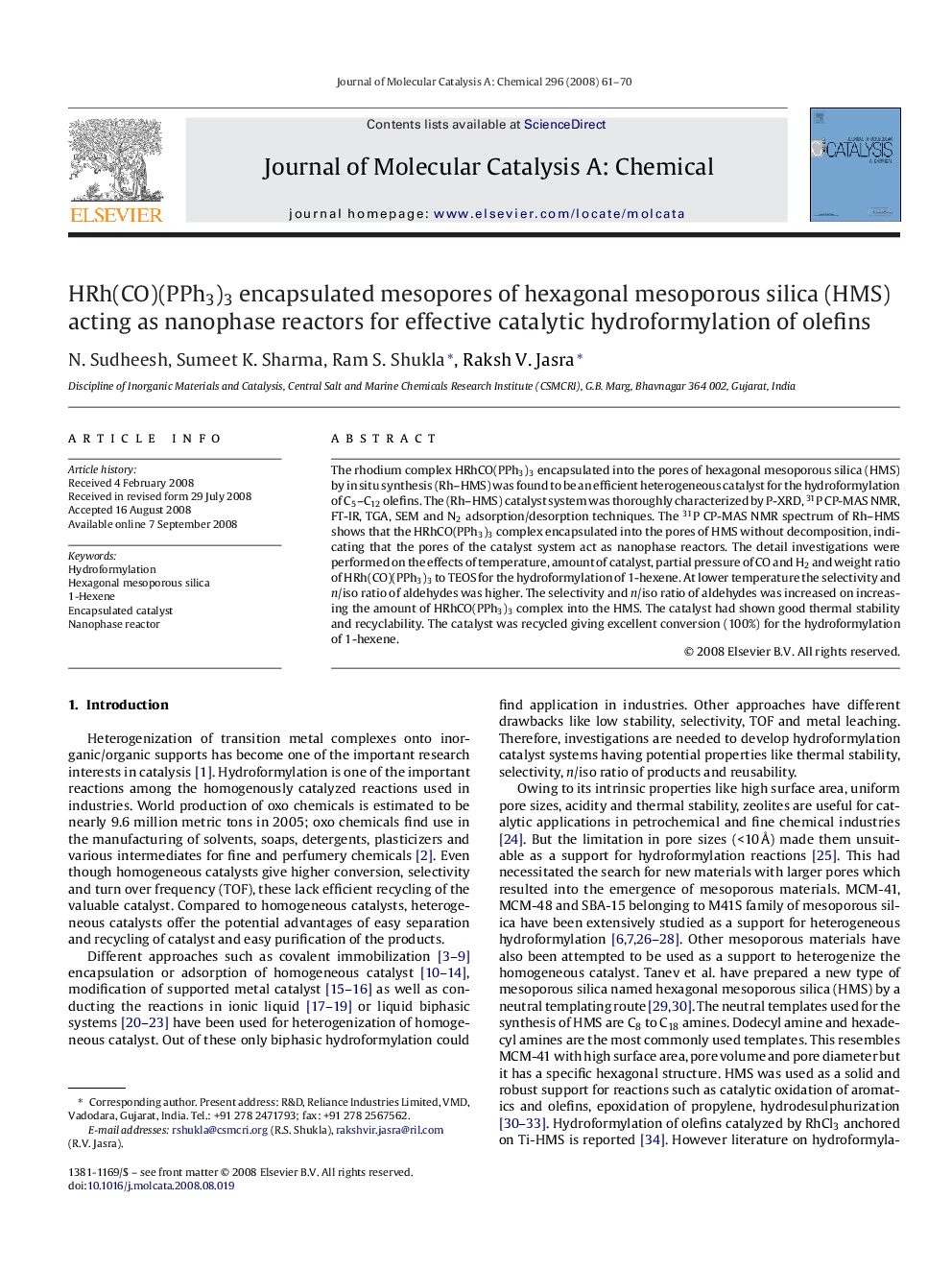| Article ID | Journal | Published Year | Pages | File Type |
|---|---|---|---|---|
| 67387 | Journal of Molecular Catalysis A: Chemical | 2008 | 10 Pages |
The rhodium complex HRhCO(PPh3)3 encapsulated into the pores of hexagonal mesoporous silica (HMS) by in situ synthesis (Rh–HMS) was found to be an efficient heterogeneous catalyst for the hydroformylation of C5–C12 olefins. The (Rh–HMS) catalyst system was thoroughly characterized by P-XRD, 31P CP-MAS NMR, FT-IR, TGA, SEM and N2 adsorption/desorption techniques. The 31P CP-MAS NMR spectrum of Rh–HMS shows that the HRhCO(PPh3)3 complex encapsulated into the pores of HMS without decomposition, indicating that the pores of the catalyst system act as nanophase reactors. The detail investigations were performed on the effects of temperature, amount of catalyst, partial pressure of CO and H2 and weight ratio of HRh(CO)(PPh3)3 to TEOS for the hydroformylation of 1-hexene. At lower temperature the selectivity and n/iso ratio of aldehydes was higher. The selectivity and n/iso ratio of aldehydes was increased on increasing the amount of HRhCO(PPh3)3 complex into the HMS. The catalyst had shown good thermal stability and recyclability. The catalyst was recycled giving excellent conversion (100%) for the hydroformylation of 1-hexene.
Graphical abstractThe rhodium complex HRhCO(PPh3)3 encapsulated into the pores of hexagonal mesoporous silica (HMS) by in situ synthesis (Rh–HMS) was found to be an efficient heterogeneous catalyst for hydroformylation of C5–C12 olefins.Figure optionsDownload full-size imageDownload as PowerPoint slide
